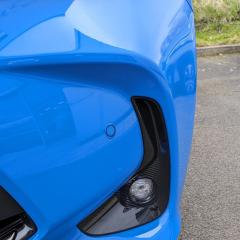It seems to be a growing problem as manufacturers strive for better aerodynamics and lower air resistance.
A neighbour had a 2012 Auris, and wanted to replace with it another last year but found that the current model was lower to the ground and made it hard for him and his wife to get in and out. So, they replaced it with something else.
I've found with my 4th generation Prius the roof line starts getting lower above the driver's head, and I now find it harder to get in the back and impossible to sit comfortably (head has to lean to miss the roof), which wasn't a problem in the previous three generations. What's made it worse is that it now has a lower floor and seats are lower and while I didn't notice a problem at first, by the time I'd had it a year my hips started playing up and I'm now dosed up to my eyes on pain killers. My physio team support my suspicion the low car has possibly accelerated, or maybe even caused the problem, and it's now reached the point where getting in and out is very painful (and noisy!). I hadn't planned to change again as heart problems will almost certainly end my driving within 5-10 years, but have now ordered a new RAV4.
The 2012 onward Yaris body is even worse - the rear roof is so low I find it hard to get in at all (have to enter in bowed stance then reverse into the seat - and would need about 3 inches extra headroom to be able to sit upright. The first 2 generations (which had sliding rear seats) could accommodate four large adults in great comfort if the seats were slid at least half way back.
Toyota aren't alone in this, I've noticed the Kia Hybrids have the same issue and so did the last generation Honda Insight (current gen looks no better).
I'm reminded of a joke going round the IBM lecture circuit in the 1980s which went that if the motor industry had advanced over the last 20 years like the IT industry, a Rolls Royce would now cost under £10, do mach 10 and several thousand miles per gallon. And it would be 3 mm long! The audience would quickly realise it might be a fantastic spec, but would be absolutely no use.

